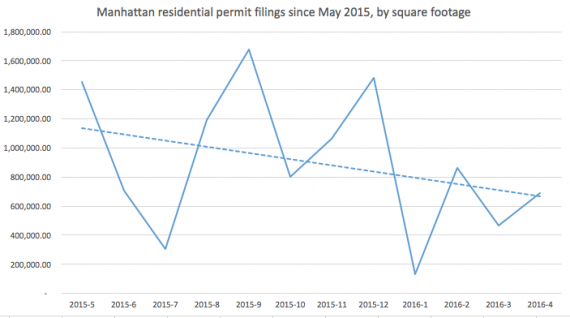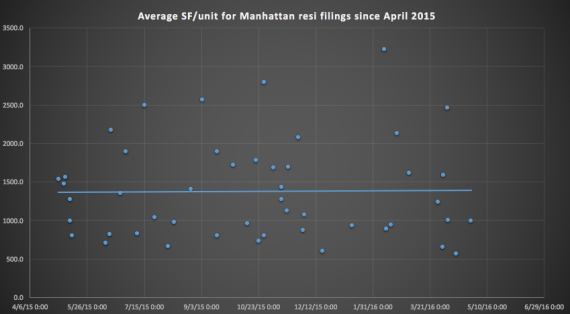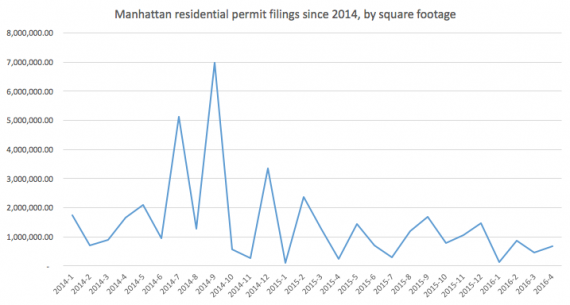UPDATED: May 19, 3:21 p.m.: Manhattan residential developers have pulled back significantly in 2016 in the face of a sagging luxury market and the end of the 421a tax abatement. But the predicted shift to condos hasn’t yet materialized, according to a rough, back-of-the-envelope analysis of building permit applications by The Real Deal.
In the first four months of year, developers filed 37 applications to build about 2.1 million square feet of total residential space in Manhattan, down from about 4 million square feet over the same period last year and just over 5 million in 2014.
The weakest month by far was January, when applications totaled just 134,000 square feet, the lowest in any month in over two years.

Part of the reason might be what happened on the 15th day of that month: the expiration of 421a.
Predictions abounded at the time, with developers and analysts anticipating both a decline in overall development and a radical shift away from rentals towards condos.
“New York is a city of renters and one that continues to grow,” said Real Estate Board of New York president John Banks in a statement at the time. “Without a program like 421-a, one can’t build multi-family rental housing with a significant below-market, or affordable, component on a scale necessary to address the City’s needs.”
It’s difficult to test this thesis because the Department of Buildings doesn’t require residential developers to indicate whether future projects are destined to produce condo or rental units.
Nonetheless, condo units tend to be larger. The average Manhattan condo occupies about 1,117 square feet of space, compared to about 996 square feet for the average rental, according to TRD’s analysis of Department of Finance and Department of City planning data covering about 445,000 units.

Over the past year, average residential square footage per unit has barely moved. That is, units have become no larger on average, suggesting the ratio of condo to rental units hasn’t significantly changed (though it’s also possible developers are filing fewer applications for rental projects, and are simply planning smaller condo units).
If indeed there’s been no shift away from multifamily development, this may be because developers simply aren’t buying the apocalyptic hype about the effects of 421a’s end. Or perhaps, they simply don’t believe the status quo will last, and politicians in Albany will ultimately make a deal leading to a similar tax abatement for developers, allowing them to build rental units with the same guarantees as before.
Without 421a, developers can expect to pay 25 to 30 percent of their rental income toward property taxes, Daniel Bernstein, an attorney with Venable LLP, said last month.
Clarification: A few points were added to clarify the rough-and-ready nature of the rentals-condos analysis, along with some possible alternate interpretations of the results.
